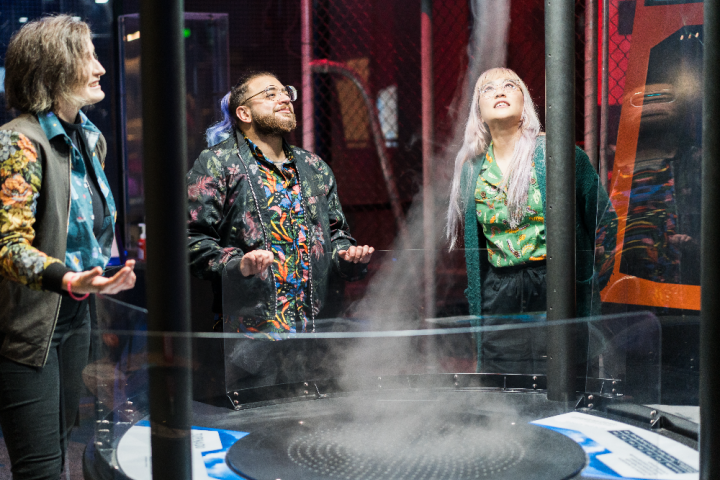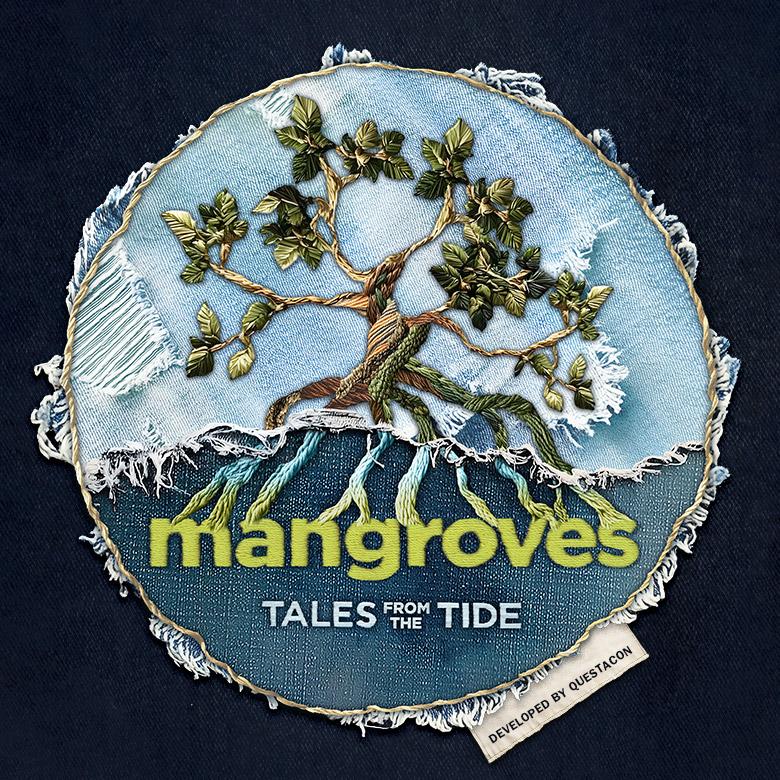About
Be transported to Australia’s Top End with Mangroves – Tales from the Tide, Questacon’s newest science-art collaboration. Featuring detailed and delightful works from Darwin-based textile artists, the exhibition celebrates the diversity, beauty and importance of mangrove environments.
Wander between columns of denim patchwork quilts, meticulously illustrated with mangrove plants and creatures. Get up close to some of the mangroves’ shyest inhabitants as you spot needle felt crabs, lobsters and mudskippers. Watch mangrove ecosystems transform with the tide in striking detail on Questacon’s 15-metre-wide curved video wall.
You can also take in a series of video stories that dive into the details of mangroves. Be guided by First Nations contributors to uncover the cultural significance of mangroves and their abundant resources.
Discover the incredible ways these coastal forests have adapted to flourish with the changing tides. Appreciate their remarkable ability to store carbon and protect our coastlines from erosion.
People have been walking these unique forests for millennia. Now it’s your turn.
Meet the artists and contributors
Questacon has collaborated with artists and First Nations knowledge holders to create this new exhibition.
Mangrove Artists Collective (Darwin)
Comprising artists Jasmine Jan, Barbara Williams and Melanie Tribe, the Mangrove Artists Collective were inspired by the dynamic mangrove ecosystems around Darwin to create the textile artworks in this exhibition.
Jasmine Jan
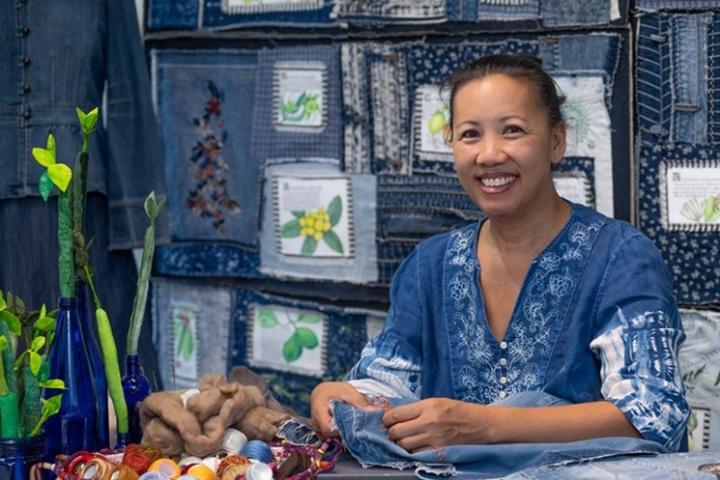
Jasmine Jan is a mixed media artist and wildlife educator based in Lambells Lagoon, Northern Territory. Inspired by decades of experience in wildlife conservation, she creates installations and exhibitions to raise awareness of climate change and species extinction. Jasmine’s efforts have earned her a Churchill fellowship and other prestigious awards.
Jasmine developed the Blue Carbon Poles artwork concept, using reclaimed denim to create the patchwork quilts. She also created the illustrated sewn patches and needle felted details on the quilts that highlight some of the incredible flora and fauna found in mangroves. These works were the inspiration for Mangroves – Tales from the Tide.

Jasmine chose to use reclaimed denim for this work for its versatility and colour, but also to convey some important messages. The blue colour in and of itself is one of these; it acts as a reference to blue carbon – marine environments which absorb and store vast amounts of carbon.
The use of denim also highlights its contribution to the ‘fast fashion’ problem within the clothing industry. By recycling this material – sourced ethically from op shops – the artists hope to also draw attention to the clothing industry as one of the world’s largest polluting industries.
Barbara Williams
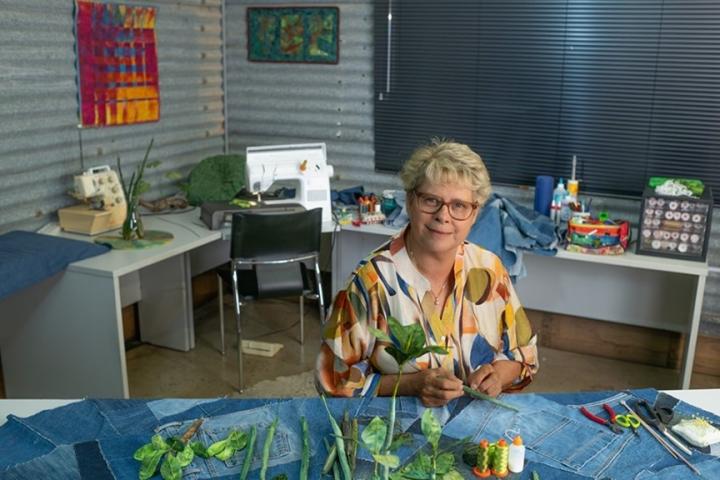
Barbara Williams is a multi-award-winning textile artist based in the Northern Territory. She has played a key role in a wide range of natural history displays for the Territory Wildlife Park including a Crocheted Coral Reef and Atlas Moth Felted Forest.
Her passion for wildlife and conservation has led to numerous environmental art projects, utilising her skills in traditional patchwork, quilting, free-motion stitching, appliqué, and needlework. Barbara’s work can be seen in the stitching and 3D floral fabric sculptures that adorn the skirts that surround each of Jasmine Jan’s Blue Carbon Poles.
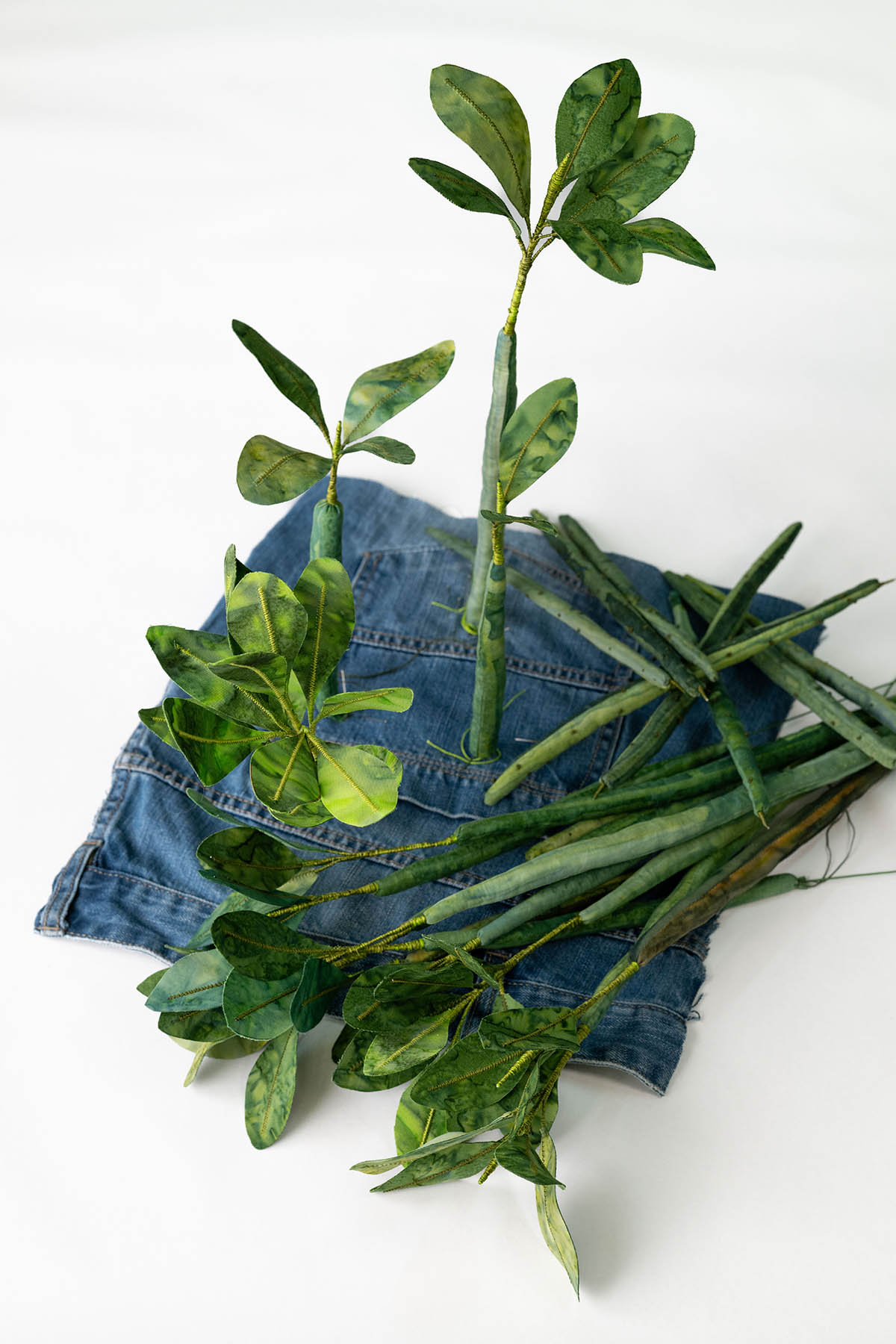
Melanie Tribe
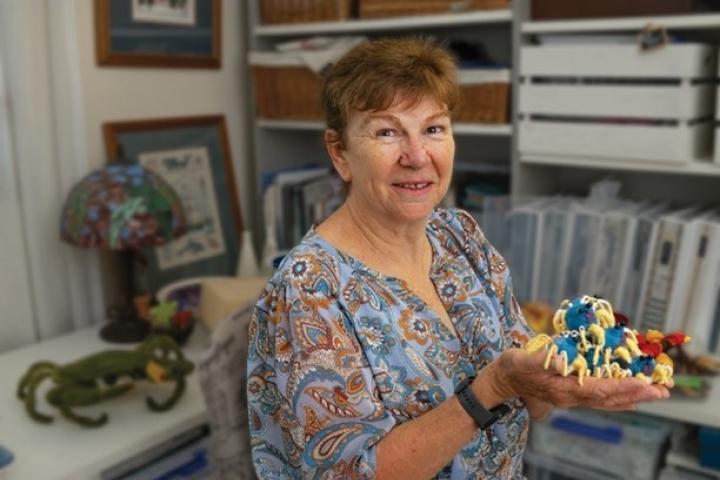
Melanie Tribe is a glass and needle-felt artist based in Darwin, Northern Territory. Her creative journey has spanned various mediums, but she now focuses on the contrasting techniques of dry needle felting and kiln-formed glass.
Melanie is passionate about wildlife conservation and has contributed to numerous art installations at the Territory Wildlife Park, including Walk the Plank on Plastics, Crocheted Coral Reef, and Atlas Moth Felted Forest.
Melanie created over 50 needle felted sculptures that adorn the Blue Carbon Poles denim quilts to showcase some of the mangrove’s shyest inhabitants.
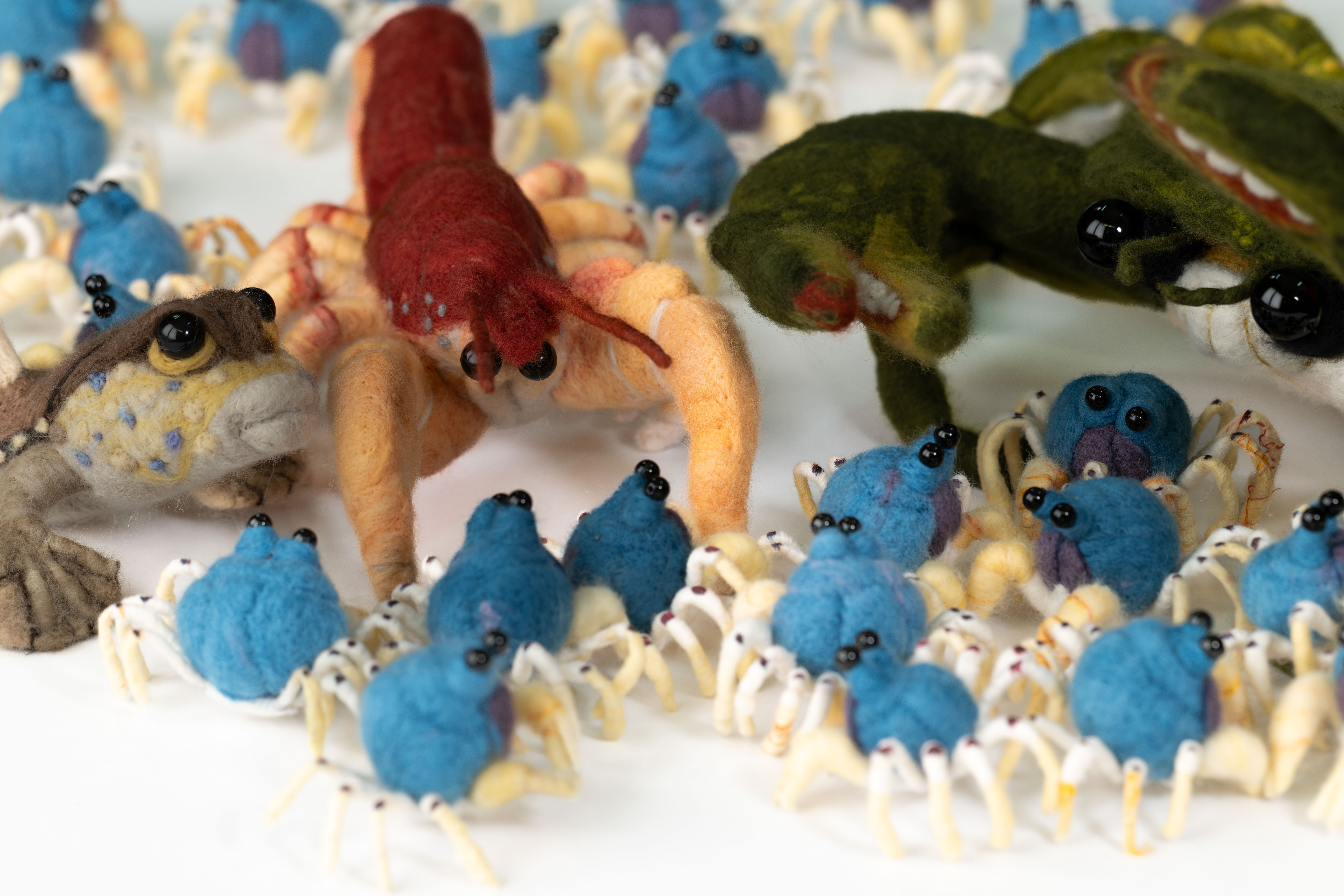
Moydra, Yvonne Odegaard
Larrakia Gulumoerrgin artist Yvonne Odegaard created Gulumoerrgin-Larrakia Saltwater Mangrove the unique screen-printed fabric artwork that covers the ottoman seating in the exhibition. Yvonne is a Larrakia Elder who is also known by her artist-name, Moydra, which means ‘star dreaming’. The artwork features many of the animals that call Australia’s mangroves home, including long bum shellfish, mud mussels and mud crabs. The artwork also features dugongs that swim near the mangroves from their seagrass habitats.
Artist’s Statement
Gulumoerrgin gutitmidjinda Moedoelma.
The mangroves are our filtration system & important to our coastal ecosystem that filter water and sediment through the mangrove root system. The mangroves hold our valuable food source, such as long bums, mud mussels, mud crab and other shellfish that sustain and keeps us healthy.
The dugong swims near the mangroves when the tide in high and Larrakia men spear them with a harpoon for food for family.
There is a Dugong- Damaldunggala Dreaming not far from where I live on the Cox Peninsula and a very significant dreaming. It represents the Mermaid- Mamulubma.
Rachel Dikuḻ Baker

Questacon collaborated with Djambarrpuyngu woman and digital creator Rachel Dikuḻ Baker. In the exhibition, Rachel showcases how Indigenous Yolngu people have walked the mangroves of their Country in Northeast Arnhem Land for thousands of years.
Beyond our exhibition, Rachel shares her knowledge of mangrove bushtucker, weaving, language and connections to Country with the world through her Facebook page – Australian Woven Connections.
Things to know
- Mangroves – Tales from the Tide is in Gallery 8, where Questacon explores emerging ideas from a range of perspectives in contemporary science and technology.
- The exhibition features textile artworks and immersive digital content.
- Unlike other Questacon galleries, the artworks in this exhibition aren’t for touching. Visitors are invited to sit down, relax and take it all in.
- Entry is included with the purchase of general admission to Questacon.
More exhibitions
-
Foyer
Science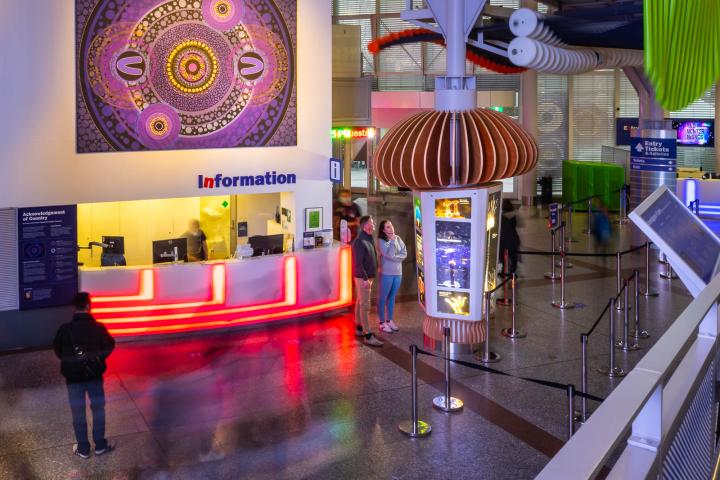
-
Science Garden
Science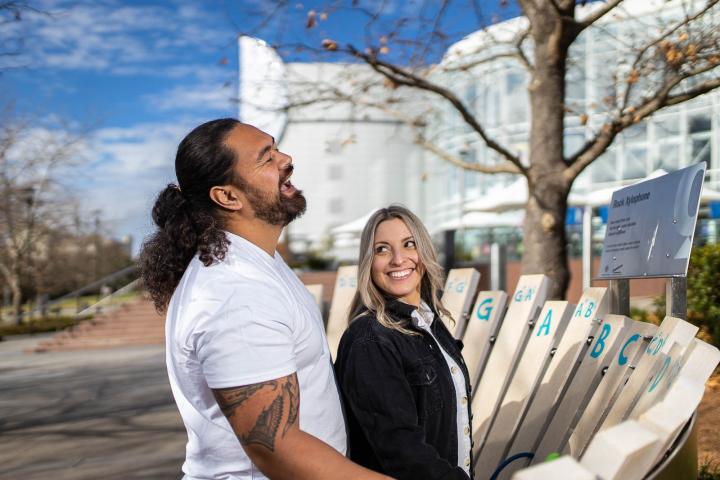
-
Awesome Earth
Earth and Space Sciences